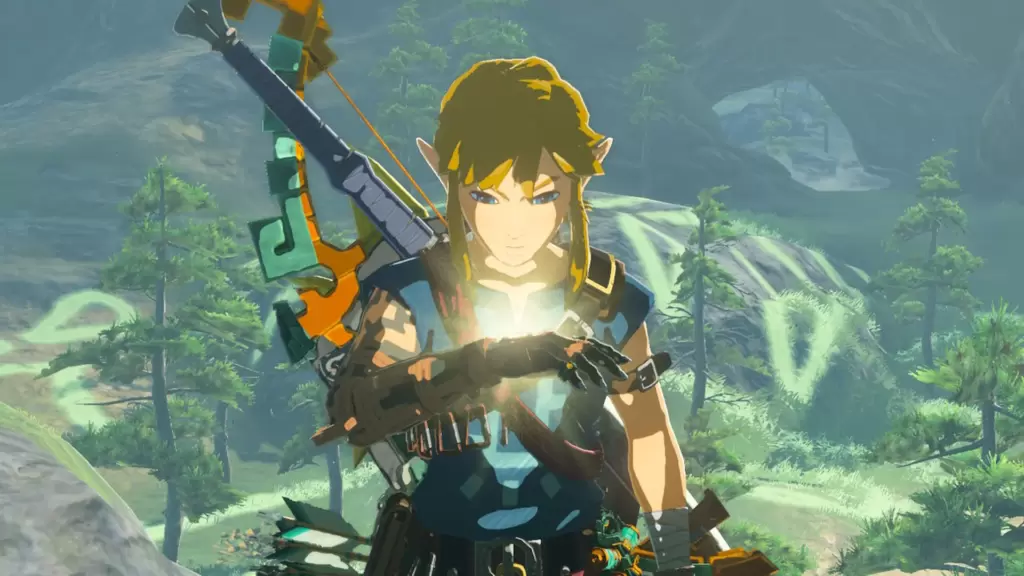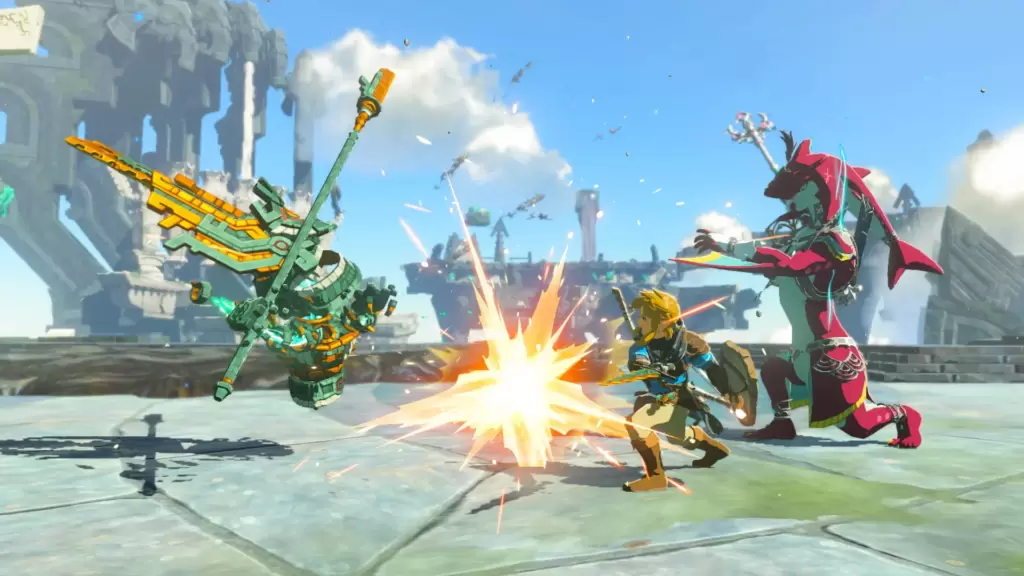As a sequel to what was (at the time) the most successful game in the series’ long history, The Legend of Zelda: Tears of the Kingdom definitely had a lot riding on its shoulders. The runaway success of Breath of the Wild and the continued appreciation of that game of millions of Zelda fans meant two things. First, Tears of the Kingdom had to differentiate itself enough from Breath of the Wild to justify its existence as a sequel to that open-world masterpiece. Second, the game needed to impress from a technical perspective in order to stand shoulder-to-shoulder with other contemporary games. Tears of the Kingdom would need to not just surpass Breath of the Wild, it needed to revolutionize open-world game design in a post-Elden Ring world.
The truth is that Tears of the Kingdom can trace its development back to the weeks and months immediately following the release of Breath of the Wild. Nintendo definitely knew they had successfully revitalized the Legend of Zelda franchise with its new open-world template, and it was only a matter of time before the team got hard at work on a sequel. That said, the title went through several cycles of iteration and expansion before the team finally settled on the game that would arrive in May of 2023 to the delight of millions. Tears of the Kingdom is one of the most important games to release this year and one of the most important titles in the Nintendo Switch library, and its development history only serves to cement that legacy.
Zelda: Tears of the Kingdom – From DLC to Full-Fledged Sequel

The seeds that would become Tears of the Kingdom were first planted almost immediately after Breath of the Wild‘s completion. After initially starting as plans for more and more DLC content (outside the Champion’s Ballad and Master Trials DLC that saw release for Breath of the Wild), the scale of these ideas quickly grew to a point where it was no longer feasible to compile all of them into an expansion. Realizing that he and his team still had plenty of room to innovate and improve the new open-world Zelda format that Breath of the Wild establishes, Eiji Aonuma made the choice to expand the scope of these ideas from DLC to a full sequel. With the team’s work now ahead of them, Nintendo announced the existence of a sequel to Breath of the Wild at E3 in 2019.
The most important of these many ideas was the team’s desire to expand Link’s world to both the sky and the underground. Because the team agreed that the version of Hyrule created for Breath of the Wild should reappear in the sequel (albeit in a slightly different form), it became necessary to consider how to introduce enough new content without leaving players with what the team referred to internally as “strong deja vu”. The solution? Expanding Hyrule in opposite vertical directions, adding both a full underground area (known as The Depths) and an airborne kingdom similar to Skyloft from Skyward Sword but more ruinous, indicating the remnants of a lost civilzation in Hyrule’s distant history.
Zelda: Tears of the Kingdom – Delay After Delay

With their path set out before them, Eiji Aonuma and his team began to organize all the ideas that they had compiled since Breath of the Wild‘s completion and start of constructing its sequel. Beginning with a list of all the ideas the team had wanted to implement in Breath of the Wild but could not (thanks to the limitations of the game releasing cross-gen with the Nintendo Switch and the Wii U), the primary goal was to embrace everything that could have been in Breath of the Wild and make sure that it made an appearance in the sequel. Interestingly, one of these features included finding ways to encourage more experimentation and imaginative play based on what the team had seen fans get creative with in Breath of the Wild.
With some lofty goals for the sequel, the title was already a ways off by the time of its announcement in 2019. Unfortunately, the next several months would see the emergence of the COVID-19 pandemic. By March of 2020, with most of the world facing a health crisis, game developers were forced to relocate to remote work and continue their projects from home. The change in production caused a significant delay for Tears of the Kingdom and hundreds of other titles, decidedly moving the needle in terms of the game’s release date. Nintendo announced an initial delay for the title in 2021, with the final delay announcement and official reveal of the title coming in September 2022 as part of the game’s Nintendo Direct presentation.
Zelda: Tears of the Kingdom – Triumphant Launch and Breaking Records

With a firm release date of Q2 2023, Aonuma and his team spent the better part of the last several months of Tears of the Kingdom‘s development polishing up the title and making sure it launched in a favorable state. Thanks to the ambitious nature of the game’s many systems (including a fully realized crafting and construction system that allows players to build almost anything), these final months of polish would prove to be crucial in order for the game to launch with the same level of quality inherent in a Legend of Zelda release. Thankfully, all of the gambles the team took and the extended time to polish the title absolutely paid off.
Releasing May 12, 2023, Tears of the Kingdom quickly eclipsed nearly every record set out before it. Not only is the title the fastest-selling game in the history of The Legend of Zelda franchise, it’s also the fastest-selling game for the Nintendo Switch, period. Anticipation for the title had reached a fever-pitch, with hands-on previews from game journalists and Nintendo’s own revealed footage showcasing a game that was the next logical evolution from the incredible Breath of the Wild. In just two weeks, Tears of the Kingdom had nearly reached the same sales milestones that took Breath of the Wild two years. Most Zelda titles have lengthy development cycles, but in the case of Tears of the Kingdom, that extra time in the oven seems to have only helped secure the title as a surefire contender for 2023’s Game of the Year.
